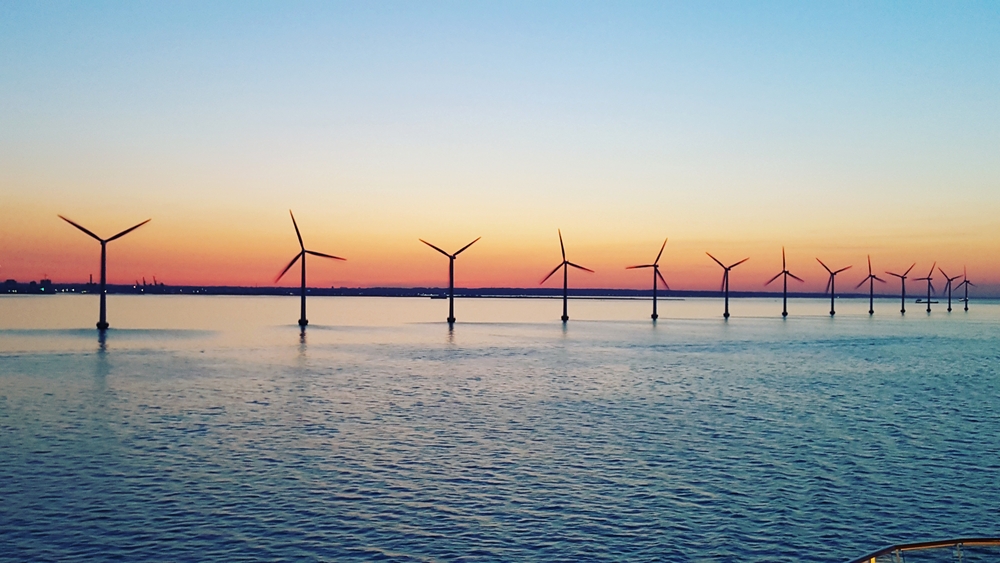Since the Industrial Revolution, the energy mix of most countries around the world has been dominated by fossil fuels.
To reduce carbon dioxide emissions andreduce local air pollution, the world must quickly switch to low-carbon energy sources - nuclear and renewable technologies. Against the backdrop of the widely discussed news that Shell intends to cut up to 40% of oil and gas production costs in order to save money on business restructuring and the transition to renewable energy sources, we are telling you more about them and changes in the work of the oil-producing giant.
Why does Shell need a new strategy?
Shell's new cost-cutting program, known internally as Project Reshape, is expected to be completed this year. The program will affect three main divisions of the company.
Reducing costs is vital to Shell's planson the transition to the energy and renewable energy sector, where profitability is relatively low. Competition is also likely to intensify with utilities and rival oil companies, including BP and Total, who are battling for market share as the global economy turns green.

“We had a great model, but does it fitfor the future? There will be differences, and it’s not just the structure, but the culture and the type of company we want to be, ”said a senior Shell source, who declined to be named.
Last year, Shell had total operating expenses of $38 billion and capital expenditures of $24 billion.
Reducing the cost of mining
Shell is exploring ways to cut production costsoil and gas by 30-40 percent of the largest Upstream division by cutting operating expenses and capital expenditures on new projects, two sources involved in creating the cost-cutting program told Reuters.
According to sources, now Shell wantsconcentrate oil and gas production in a few key centers, including the Gulf of Mexico, Nigeria and the North Sea. The company's integrated gas division, which manages Shell's liquefied natural gas (LNG) operations as well as some gas production, is also considering deep excavations.
Processing and marketing of products
With regard to processing and marketing of products, inThe new plan focuses on reducing costs through Shell's network of 45,000 filling stations - the largest in the world, considered one of its “most valuable activities” and is expected to play a key role in the transition to the new spending plan.
“We are undergoing a strategic analysis of the organization,the goal of which is to ensure that we are set up to thrive throughout the energy transition and be a leaner organization that is also cost competitive. We are currently considering a number of options and scenarios that are being carefully assessed,” — a Shell representative said in an official statement.
How will Shell's new policy affect employees?
According to sources, the teams of the three mainShell divisions are also exploring how to change the business by cutting thousands of jobs and shedding multiple layers of management to save money and create a more flexible company that is preparing for restructuring.
Shell cuts are not the first to happen. The company had 83,000 employees at the end of 2019, and has undergone a major cost-cutting campaign following its $ 54 billion acquisition of BG Group 2016, which has helped significantly increase its cash flows in recent years.
Shell's operating expenses, which includemanufacturing, manufacturing, sales, distribution, administration, and research and development costs decreased 15%, or about $ 7 billion, between 2014 and 2017.
Impact of the coronavirus pandemic on the situation
But the sharp slowdown in global economic growth following the COVID-19 epidemic, coupled with Shell's plans to cut carbon emissions to zero by 2050, has created a fresh boost.
Shell cut its capex plansfor 2020 by $ 5 billion to $ 20 billion due to the fall in oil and gas prices due to the pandemic amid warnings that this could have long-term implications for global energy demand.

In July, Van Beurden said that Shell plans to cut costs by $ 3-4 billion by the end of March 2021, including through job cuts and the suspension of bonuses.
He explained that travel restrictions duringPandemics have accelerated Shell's digitalization, while machine learning has been deployed to minimize downtime and reduce maintenance time in refineries, oil and gas platforms, and LNG plants.
In addition to reducing the cost of retail business inRefining and marketing, Shell is pushing forward plans to reduce the number of its refineries to 10 from 17 last year. We have already agreed to sell three.
The new strategy also includes finding ways to abruptlyincreasing the production of low-carbon fuels such as biofuels, chemicals and lubricants. This can be done using low-carbon raw materials such as cooking oil, according to one source.
When will Shell announce the new decision?
It is expected that a new strategy, which, according toThe largest event in Shell's modern history, company sources said, will be completed by the end of 2020 when Shell wants to announce a major restructuring. In February 2021, he will host Investor Day.
The main reasons for the difficult decision
The driving forces behind Shell's restructuring reflectEuropean rivals BP and Eni, which plan to reduce their focus on oil and gas and build new low-carbon plants in the next decade.
Renewable energy sources
Renewable energy sources.Energy generated from natural resources (sun, wind, water or land), with little or no waste or emissions; they are either inexhaustible or can be quickly restored by human intervention. These include hydropower, biomass, onshore and offshore wind, solar and offshore geothermal energy. Renewable energy is projected to account for a quarter of all global electricity generation by 2020, and a third by 2040.

So what types of renewable energy are there?
- Biofuels- fuel produced from materials of plant or animal origin.
- BiogasIs a gas containing methane and carbon dioxide. It is produced through a process called methanation, in which biomass - all organic material of plant or animal origin that can be burned as an energy source - is fermented in an oxygen-free environment. Once processed, it can be used as fuel.
- Biomass- a mass containing organic materialbiological, plant or animal origin. Some of this resource could potentially be used for energy production (heat and electricity) or for agricultural purposes through combustion.
By the way, biomass is the second largest renewable energy source in the world. - Biomethane, also known as "green gas", representsis a non-toxic gas produced from organic waste. In the process of decomposition of this material in an oxygen-free environment, biogas is formed, which is then purified to biomethane. It can then be used as vehicle fuel, distributed in gas networks, or used to generate green energy.
- Automotive Natural Gas (VNG)
Containing 100% natural gas, VNG emits less CO2, nitrogen oxides and harmful particles than gasoline. VNG is also economical to use. - Green energyis electrical energy obtained from renewable sources.
- Sea wind
An offshore wind turbine works exactly the same way.as well as onshore installation; the only difference is that it is installed at sea. Offshore wind turbines use offshore wind energy to generate more energy without CO2 emissions. A special finish protects it from salty winds and corrosion. On average, an offshore wind turbine produces approximately twice as much energy as its onshore counterpart. - Coastal wind
Onshore wind turbines use the power of the wind to convert its kinetic energy into mechanical energy, which is then used to generate electricity. - Marine geothermal energyuses the temperature difference between warmersurface water and cold water located at great depths, which is pumped through pipelines up to 1 km long. Heat exchangers and heat pumps are then used to generate heat or cooling energy as needed. The heated or chilled water is then directed to individual buildings for heating or air conditioning.
- Hydropower— converts the energy of water movement intoelectricity. Hydropower accounts for about 90% of renewable energy worldwide and accounts for 14% of ENGIE's installed generating capacity.
Renewable energy problem
The volatility of renewable energy sources -it is this term that describes the inability of renewable sources to provide guaranteed continuity of electricity production. This is the case with wind and solar energy, where generation stops in the absence of wind and at night, respectively. This intermittent availability is a major challenge for distribution networks that need to have predictable amounts of electricity available at all times.
Energy to gas
Wind generators only work when there is sufficient wind, and solar panels only work during daylight hours. This intermittency makes it impossible to continuously respond to energy demands.
Solar energy
Solar energy is generated byharnessing solar energy when it reaches the Earth. People can use solar collectors, including solar panels, to convert solar radiation into heat. This solar heat is then distributed in a closed system that uses water or air as a coolant. Every 50 minutes, the sun provides enough energy to satisfy the needs of everyone on the planet for an entire year.

Concentrated solar energy
Concentrated solar energy refers toa set of clean and sustainable technologies designed to generate power on a large scale. Large arrays of mirrors are used to concentrate solar radiation and use its heat to produce high-temperature steam from water. This steam can then drive a turbine to generate electricity or be used directly in many different applications, including desalination, hydrocarbon recovery, and other industrial processes. Heat storage solutions allow CSP systems to continuously deliver steam even after sunset.
Today solar energy produces less than 1%worldwide, but according to the International Energy Agency (IEA) this share will rise to 10-15% by 2050 with the advent of Concentrated Solar Power (CSP).
Read also
In the era of ecosystems: how IT giants are turning into interfaces of our everyday life
The Doomsday glacier turned out to be more dangerous than scientists thought. We tell the main thing
GitHub has replaced the term "master" with a neutral equivalent